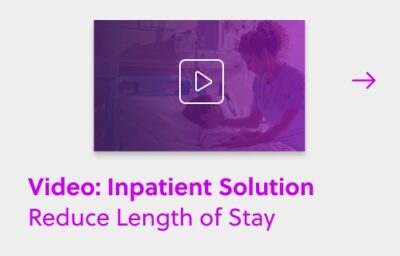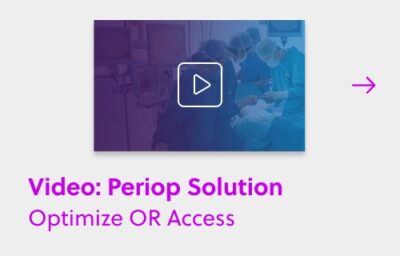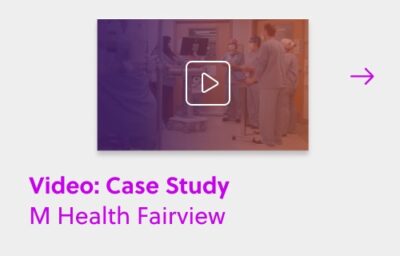Dr. Andrew Pendley is the medical director of the emergency department at Emory Healthcare. A self-professed Operations Nerd, Dr. Pendley has always been fascinated by the conflux of hospital operations, lean principles and medical best practices. Brought together, these can have tremendous impact on patient flow and the clinical work environment. Dr. Pendley recently spoke with us about the role of technology in hospitals and how it has changed hospital processes.
- What technology trends have had the most impact on hospital operations?
Dr. Andrew Pendley: Healthcare, due to the scale of care, is generally slow to adopt technology. To look at a technology that has the biggest impact in hospital operations, you have to look at things that people take for granted today, like electronic medical records (EMR) or computer physician order entry, or the fact that we have a data warehouse. [Consider] those early transitions from paper-based record keeping that were indecipherable, to now, with something electronic and user-friendly – it provides a wealth of information quickly and lets me synthesize the thinking of a huge body of medical experts to bring more to each clinical interaction. - Were there other trends that you thought had an impact?
AP: Most people have had an EMR for a few years. They recognize there’s a need to evolve and iterate beyond that. EMR adoption opened the space for big data, analytics, predictive analyticsand artificial intelligence. I don’t think we’ve gotten to the point yet where we have really been able to take data to the next level and use it. We’re just now coming out of the cave of EMR adoption and looking to extract value and impact from the terabytes of data the EHR captures. - What other technologies had a big impact on the way healthcare is practiced?
AP: Tools, such as UpToDate and PEPID synthesize, current evidence-based practices and serve as really robust resources to reference on-shift and on your phone. That’s really powerful for decision-making and your practice. Technology has also helped individuals keep up with medical literature, trying to figure out what’s most relevant to us. I would say there are many tools and a massive amount of information that help the individual practitioner be better, but not a lot of that helps us act as a really nimble group more reliably. We are still looking for those tools that can streamline collaboration across care teams and inpatient-outpatient. - How does technology impact your lean efforts?
AP: Lean initiatives rely heavily on being able to track key performance indicators, but it’s hard to get that data from a logistical perspective. We have great technology solutions, and they generate troves of data that flow into huge databases. But employees have to pull from that data, and that leads to a lot of variation between departments in terms of quality of analysis. A lot of times, conversations break down over data disagreements, so it’s really hard to just get things done. - What’s been the biggest challenge to deploying new technology?
AP: Just the weight of the institutional inertia and resources devoted to IT. There are lots of barriers to entry. For a startup, they need a partner that really knows what it’s doing, that’s in the right place in its own evolution, that is willing to take the risk and has the capital to invest in deploying IT resources. You have to give access to clinical data and deploy without upsetting hospital operationsof a lot of different departments. You need the right mix of visionary leadership, mission alignment, inspired care teams and a responsive healthcare market. - What new technology shows promise for helping support care teams?
AP: We would like to see solutions that allow more efficient high-quality evidence-based care. It needs to be easy for care providers, patients and families to interact with, which is a huge barrier right now. Those providing care get a similar pleasant experience for showing care completed and displaying data that reinforces their performance. There are systems that exist, but they’re not always pleasant to use. - Where do you see the potential for artificial intelligence in hospitals?
AP: AI has potential for helping interaction with patients and families in being able to provide evidence-based learning and analytics around individual patient situations. Using AI for patients to self-diagnose and to educate could help lower resource consumption and improve interactions with their healthcare providers. It can help us as clinicians make diagnoses and provide treatments more quickly and accurately, particularly in lower-resourced environments. It could help patients feel more empowered, and healthcare feel less nebulous and convoluted. With AI looking at the operational data in the hospital, administrators could strategically deploy staffing to aid patient flow in ambulatory settings more easily, as well as create work queues based on maximized patient flow and positive outcomes. - Is your organization using AI, and if so, in what areas?
AP: We’re starting to determine how to leverage AI, and I’m really excited. We have a predictive analytic flow dashboard that is leveraging AI. It’s so cool. I’m able to monitor my emergency department in a more user-friendly way. I can log on securely from anywhere and have a real-time look at choke points and how the clinical teams are distributed. I’m going to start setting alerts to help build partitions that help blend workflow balances. The information provided by the AI system is easily accessible, visualized and consumed across the organization, which isn’t always the case when individuals are trying to pull data and use their own sets of variables. With the AI empowered system the data is consistent no matter who is pulling it. It has allowed me to sit down with department directors without having to bother our data analysts, we have agreement on the data, and we have had collegial conversations based on shared insights. - What would you tell your peers considering AI applications?
AP: Adoption of AI applications, or any technology, requires visionary leadership and an organizational approach. The value is much greater in helping teams work more diplomatically and seamlessly while easily interacting with other departments and ancillary services. Your CEO, CMO and CFO need to be on board. Make site visits to organizations using AI. Talk to your peers. See how the tool is affecting someone else’s operations to get a sense of what it might feel like for you on a daily basis.


